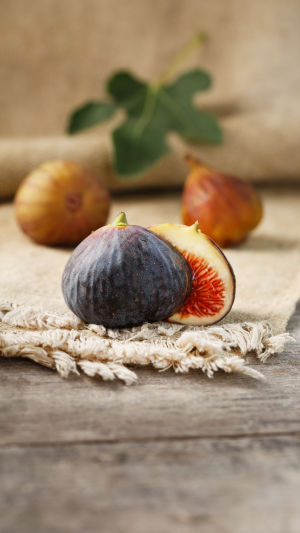The fig is a common fruit tree belonging to the genus Ficus within the Moraceae family.
It holds a rich history, having been cultivated for thousands of years, with its origins tracing back to Southwest Asia. Today, figs are extensively cultivated and have gained recognition as a vital agricultural product worldwide.
1. Characteristics of Figs:
Tree Features: Fig trees are typically medium-sized, reaching heights of 5-10 meters. They boast smooth, light gray bark and sturdy woody branches covered with smooth green bark.
Leaves: Fig leaves exhibit a palate shape, often displaying 3 to 5 lobes. They have a smooth surface and are characterized by their deep green hue.
Fruit: The fig's fruit stands out as one of its most prominent features. These fruits typically develop on the tree's branches, showcasing an obovate or oval shape.
When fully ripened, they transition into shades of purple-black or yellow-green. Figs present a smooth exterior with delicate skin, concealing numerous tiny nuts within, surrounded by a sweet and aromatic pulp.
Growth Environment: Figs exhibit a remarkable adaptability to various climatic conditions. However, they thrive best in warm and arid regions where they can bask in abundant sunlight and grow in well-draining soil.
2. Nutritional Value of Figs:
Figs are a low-calorie, high-fiber food rich in vitamins and minerals, notably potassium and calcium. They also boast a wealth of antioxidants, such as polyphenols, which play a crucial role in safeguarding cells against the detrimental effects of free radicals.
3. Ways to Consume Figs:
Raw Consumption: Ripe figs can be enjoyed fresh, allowing you to relish their sweet flavor and succulent texture.
Jam Production: Fig jam constitutes a delightful option that can elevate various dishes, from bread and cookies to pastries.
Drying: Slicing figs into thin pieces and then drying them yields delectable dried fruits. Dried figs serve as a nutritious snack or versatile cooking ingredient.
Pairing with Other Foods: Figs harmonize beautifully with diverse ingredients, including cheese, nuts, and more, making for exquisite appetizers and charcuterie boards.
Cooking: Figs can be incorporated into cooking, whether as a flavorful topping for grilled chicken or fish or as an ingredient in roasted vegetable dishes.
4. Taboos and Considerations with Figs:
Despite their delectable nature, figs should be consumed with certain considerations and taboos in mind to ensure one's health and safety:
Avoid Pairing with Cold Foods: Figs should not be consumed alongside cold foods, as this combination may lead to digestive discomfort, including diarrhea and abdominal pain. Cold foods to avoid include okra, duck meat, millet, mung beans, cucumber, and bitter melon.
Limit Consumption with High-Sugar Foods: Given that figs are naturally high in sugar, consuming them alongside other high-sugar foods can lead to blood sugar spikes and potential weight gain. High-sugar foods to be cautious with include sugar, candy, pastries, and honey.
Exercise Caution with Acidic Foods: Figs contain plant acids that can irritate the gastrointestinal tract when consumed with other sour foods, potentially damaging the gastrointestinal mucosa.
In summary, figs are a delightful and nutritionally rich fruit. However, it is essential to make mindful choices regarding their pairing and consumption, taking into account personal health status and preferences.
When in doubt or facing specific health concerns, seeking guidance from a physician or nutritionist is recommended.





